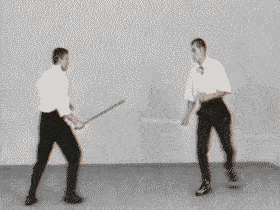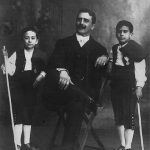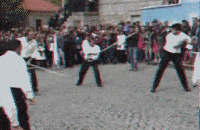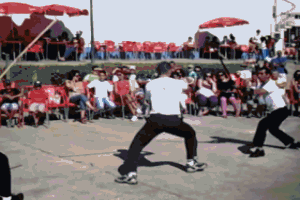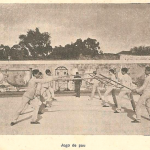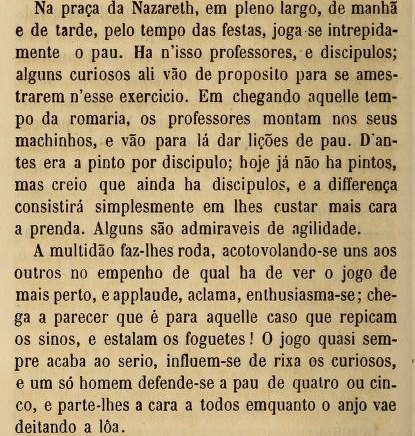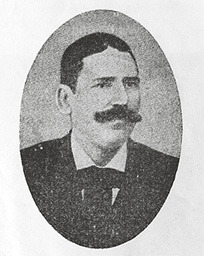
“Quando me julguei suficientemente ensinado do que se fazia no Real Ginásio, conversei com o meu primeiro mestre e amigo Artur dos Santos, sobre as minhas tensões de ir experimentar outros ares, e eis-me à procura doutros, que algumas cousas mais me pudessem ensinar.
Vi muito pouco antes de ir ao barracão do mestre Salreu, em diversos quintais que visitei, e esse pouco que tive ocasião de ver não me admirou, pois que era jogo mais ou menos semelhante ao que primeiro tinha aprendido.
Mas veio um dia em que entrei no quintal do mestre Salreu, e da parte de fora da janela do barracão estive vendo um assalto, como nunca julguei que pudesse haver. Que energia de pancadas, que certeza nas defesas, que cousa tão linda, certa e movimentada, em que logo percebi, que ali nada se perdia no ar, e que o terreno era disputado com toda a consciência.
Escusado será dizer, que logo que o assalto terminou eu estava da parte de dentro do barracão, para ver os outros assaltos ou lições que se seguiram, e no dia seguinte eu era mais um discípulo do mestre Salreu.
(…) Domingos Valente de Couras Salreu foi o jogador da elite, o homem mais completo, com mais vastos conhecimentos, sabendo-se cobrir como ninguém, cortando só quando era oportuno, e sabendo fazer brilhar o seu adversário quando isso lhe convinha ou apetecia. Nunca ninguém deixou de ficar satisfeito, quando acabasse de jogar com o mestre Salreu, mas posso afiançar que exceptuando alguns seus discípulos adiantados, ninguém percebia do que ele poderia fazer, se fosse um jogador vaidoso.”
“Duas palavras sobre o jogo do pau” – Frederico Hopffer (1924)
EN:
Frederico Hopffer, in his 1924 book on jogo do pau, describes the first time he met master Domingos Salreu’s class.
When I felt I knew enough about what was taught at the Royal Gymnasium (nowadays Ginásio Clube Português*) I talked with my master and friend Artur dos Santos about my intentions to try out other places, and I found myself looking for others that could teach me something else.
Before going to Master Salreu’s shed, I saw very little in the various yards that I visited, and the few things I had the opportunity to see didn’t impress me, because it was very similar to what I have had learned in the first place.
But there was the day I entered Master Salreu’s yard, and from the outside of the window of the shed I watched an assault, and I never imaged there could be one like it. The energy of the strikes and the certainty of the defences, what a beautiful thing, correct and dynamic, and I immediately understood that there nothing got lost in the air, and that the terrain was disputed with all consciousness.
Needless to say, as soon as the assault ended I was inside the yard to see more assaults or lessons that followed, and the next day I was one more student of Master Salreu.
(…) Domingos Valente de Couras Salreu was an elite fencer, with a most vast knowledge; he knew how to cover himself as no one else did, evading only when it was opportune, and knew how to make his opponents shine when he wanted or if it was convenient to him. I have never seen someone not satisfied when fencing with Master Salreu, yet most people, except his most experienced students, would not understand what he could do if he happened to be a vain fencer.
“Duas palavras sobre o jogo do pau” – Frederico Hopffer (1924)
Notes:
* – Ginásio Clube Português is the oldest gymnasium with jogo do pau classes, currently headed by Master Nuno Russo.
